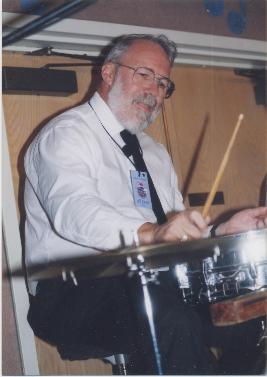“Armstrong's Influence”
By Bert Thompson
The other day I took out the Armstrong CD titled Ambassador Satch, and as I listened I again
marveled at his genius—the dazzling technique, the phrasing, the teeming ideas—as I
always do, but also began to think about his influence on jazz.
It has often been stated that Armstrong changed the course of the development of jazz, that
no jazz trumpet player—indeed, no jazz musician, regardless of instrument, or singer—
escapes his influence. That assessment gets no argument from me. But at the same time, I’m
not too sure about how totally positive this influence was.
It seems to me that Armstrong’s ascendance also resulted in loss, too. With the emphasis on
soloing that he ushered in, the collective improvisation element of jazz fell into decline. The
Ambassador Satch album illustrates it well—each track features a string of solos, between
two “bookends” of ensembles. Between Armstrong’s climbing into prominence and, say, the
outbreak of WWII, only in New Orleans was the ensemble element probably retained, but
that is not certain since few, if any, recordings exist of New Orleans bands prior to the
beginning of the “revival” that began in the late thirties/early forties when aficionados like
Frederic Ramsey and Charles Smith (Jazzmen, 1939) and Bill Russell (American Music
records, 1944) descended on New Orleans to interview and to record the older musicians still
playing in the yet prevalent style of collective improvisation.
In the thirties and on into the first half of the forties, swing was king and all bands had their
featured soloists, such as Krupa, Goodman, Hampton, James, et al. No change was apparent
when bebop took over—Parker, Gillespie, et al. were the “stars.” With a few notable
exceptions, such as Lu Watters’ Yerba Buena Jazz Band, for example, almost all bands playing
“Dixieland” (outside of New Orleans, at least) during the traditional jazz revival subscribed
to the All-Star “formula” of solos sandwiched between an opening ensemble chorus or two
and a closing chorus or two, as many, even most, still do to this day.
This is not to denigrate Armstrong at all, but I regret that with the advent of the “all-stars”
came the eclipse of the “no-stars” of the New Orleans ensemble playing where no soloist
took center stage with everyone else except the rhythm section dropping out. And ironically
it seems to have had its genesis largely at the hands of a New Orleanean, which Armstrong,
after all, was.
Today, as I have often said, one will find more practitioners of the New Orleans uptown
style of jazz in the U.K., Canada, Europe, Japan, even Australia, than here in the U.S.,
particularly in New Orleans itself. (No use looking to Preservation Hall to find it. None is
being preserved and on offer there today, as it once was.) One cannot hear it at any of the
jazz festivals here in the U.S., including that “daddy of them all,” Sacramento, which
usually boasts of having a100 or more bands—but not one of which over the last good many
years has played New Orleans-style jazz. While it is exciting to listen to an accomplished
soloist such as Armstrong, nothing to my ears surpasses the ecstasy that comes from an
ensemble that is “in the groove” while improvising collectively.
If traditional or dixieland or whatever-you-want-to-call-it jazz is a “niche” type, surely New
Orleans uptown jazz is a “niche within a niche,” almost to the point of disappearance.
Perhaps another “revival” will be needed to facilitate a comeback.
|
|





